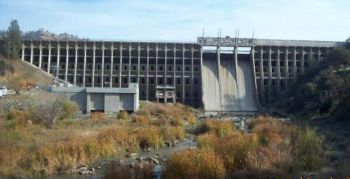Modeling Communication: Difference between revisions
No edit summary |
No edit summary |
||
| (12 intermediate revisions by 3 users not shown) | |||
| Line 2: | Line 2: | ||
__NOTOC__ | __NOTOC__ | ||
<!-- Add Category to drive breadcrumb menus --> | <!-- Add Category to drive breadcrumb menus --> | ||
[[Category: | [[Category:Engineering Analysis]] | ||
---- | ---- | ||
<!-- Insert image using {{Picture}} template --> | |||
{{Picture | |||
<!-- Add image file name (ex.image.jpg) --> | |||
|image= 1.jpg | |||
<!--Add link if applicable --> | |||
|link= | |||
<!-- Add picture caption --> | |||
|caption= Successful design and analysis projects require clear communication and well thought out plans. | |||
}} | |||
<!-- Introductory paragraph or topic page summary --> | <!-- Introductory paragraph or topic page summary --> | ||
This topic page provides a framework for communication as part of the development of hydrologic, hydraulic, seepage, and | <noautolinks>This topic page provides a framework for communication as part of the development of hydrologic, hydraulic, seepage, and stability analyses. It applies to engineers/modelers, dam owners, and regulatory agencies. Computer models can be useful tools in evaluating the performance of dams and appurtenant structures, watersheds, and a dam’s downstream consequences. There are a variety of approaches and methodologies for these modeling efforts, and it is important to owners, consultants, and regulators that clear communication is integrated in the process. The purpose of this section is to guide communication among all interested parties prior to commencing a modeling effort, at critical junctures during the modeling process, and in sharing results following completion of the analysis. </noautolinks> | ||
Learn more about the following aspects of modeling communication here: | Learn more about the following aspects of modeling communication here: | ||
* [[Pre-Analysis Communication Best Practices]] | * [[Pre-Analysis Communication Best Practices]] | ||
* Post-Analysis Communication Best Practices | * [[Post-Analysis Communication Best Practices]] | ||
This content is also available in printer-friendly PDF files that can be downloaded here: | |||
* [[Dam Modeling Communication Fact Sheet: Pre-Analysis Communication Best Practices]] | |||
* [[Dam Modeling Communication Fact Sheet: Post-Analysis Communication Best Practices]] | |||
''Development of this page was sponsored by the [[Montana | Montana Department of Natural Resources & Conservation]] with funding from the FEMA Assistance to States Grant Program.'' | |||
<!-- | <!-- WhatLinksHere will automatically populate other pages on the site with links to this page. --> | ||
{{ | {{WhatLinksHere}} | ||
<!-- Revision history information --> | <!-- Revision history information --> | ||
{{revhistinf}} | {{revhistinf}} | ||
Latest revision as of 22:09, 26 March 2025

|
| Successful design and analysis projects require clear communication and well thought out plans. |
This topic page provides a framework for communication as part of the development of hydrologic, hydraulic, seepage, and stability analyses. It applies to engineers/modelers, dam owners, and regulatory agencies. Computer models can be useful tools in evaluating the performance of dams and appurtenant structures, watersheds, and a dam’s downstream consequences. There are a variety of approaches and methodologies for these modeling efforts, and it is important to owners, consultants, and regulators that clear communication is integrated in the process. The purpose of this section is to guide communication among all interested parties prior to commencing a modeling effort, at critical junctures during the modeling process, and in sharing results following completion of the analysis.
Learn more about the following aspects of modeling communication here:
This content is also available in printer-friendly PDF files that can be downloaded here:
- Dam Modeling Communication Fact Sheet: Pre-Analysis Communication Best Practices
- Dam Modeling Communication Fact Sheet: Post-Analysis Communication Best Practices
Development of this page was sponsored by the Montana Department of Natural Resources & Conservation with funding from the FEMA Assistance to States Grant Program.
Revision ID: 8217
Revision Date: 03/26/2025
